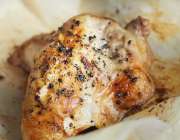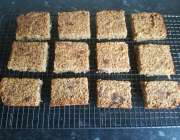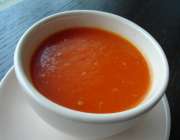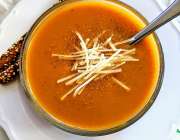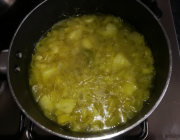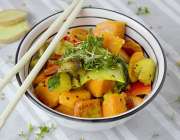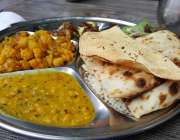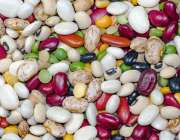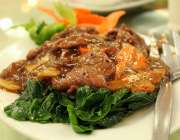Pink Scottish Salad
Pink Scottish Salad
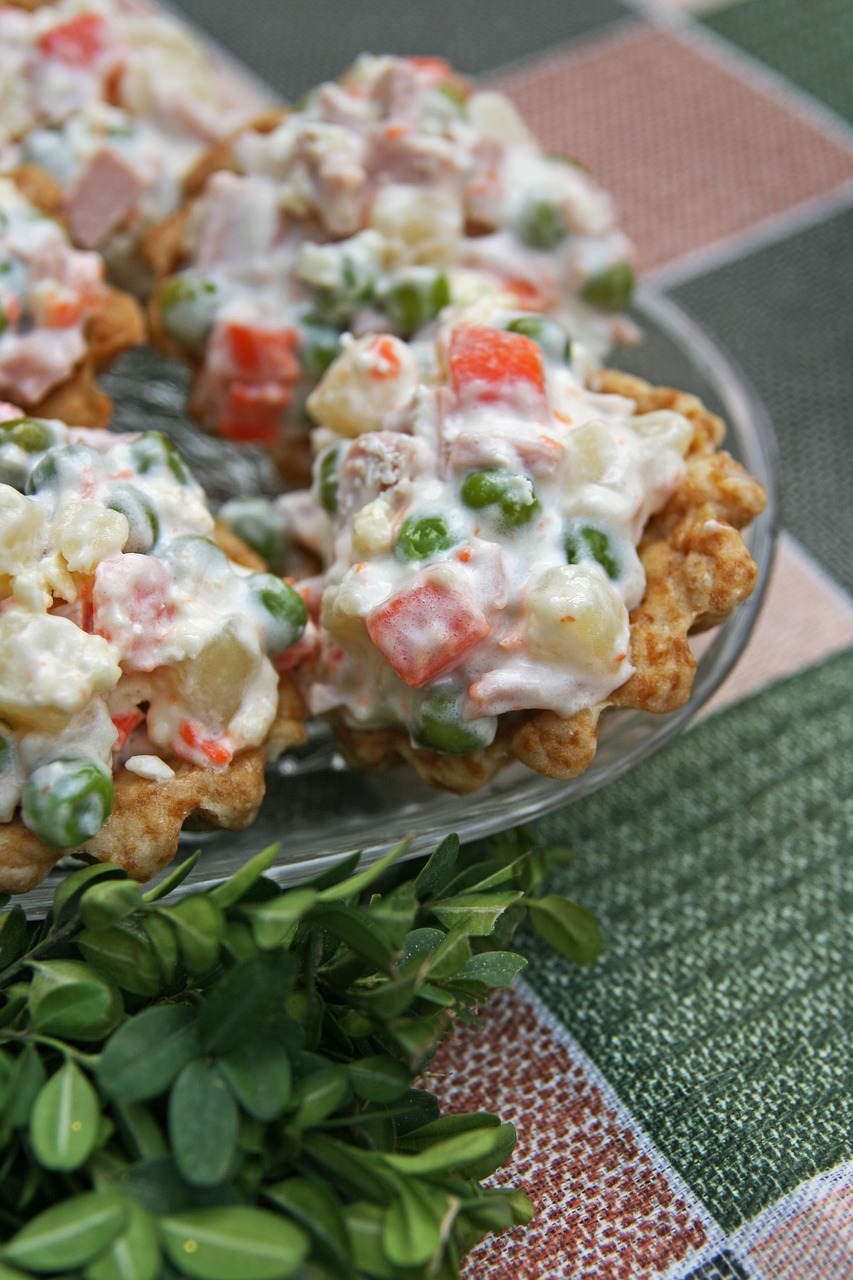
Scottish potato salad
Quick info
- Recipe difficulty - easy
- Preparation time - 10 mins
- Cooking time - 10 mins
- Serves - 6
- Dietary - Vegetarian
- Allergens - eggs Milk
Enjoy
This is a great hearty salad, made using a variety of vegetables when they are at their very best.
It works equally well as a side to leftover meat or eaten on its own.
Ingredients
- 10 waxy Aaron or other Scottish potatoes, scrubbed and diced
- 1 large fresh beetroot, peeled and diced
- 1 handful of fresh or frozen peas
- 1/2 a small red onion, diced
- 1 large carrot, peeled and diced
- 4 tablespoons of mayonnaise or salad cream
- 1/2 teaspoon of sea salt flakes
- 1/2 teaspoon of ground black pepper
- 1 teaspoon of fresh parsley (optional)
Utensils
- Chopping board
- Colander
- Knife
- Large bowl
- Large saucepan
- Medium saucepan
- Slotted spoon
- Small bowl
- Vegetable peeler
- Wooden spoon
Method
Step 1
Using two separate saucepans, one with the beetroot and the other with the potato and carrot. Cover with water and bring to the boil.
Step 2
Boil the beetroot, carrot and potato for 10 minutes or until tender.
Step 3
Halfway through cooking the potatoes and carrots, add the peas to the pot and boil for the remaining time until tender.
Step 4
Once cooked, drain the vegetables well and place into a large bowl.
Step 5
Stir in the chopped onion and parsley if using and season with the salt and pepper to taste.
Step 6
Gently fold in the mayonnaise or salad dressing and leave to cool before serving.
Nutrition per serving portion (serves 6)
Each portion provides
Energy 883kj 211kcal 10.55%
Fat 15.2g 22%
Saturates 1.2g 6%
Carbohydrates 16.2g 16%
Sugars 4.8g 5%
Salt 0.5g 8%
Protein 2.8g Low
Fibre 2.93g Med
Food Value
Calcium
Phosphorus
Potassium
Sodium
Chloride
Magnesium
Iron
Zinc
Copper
Manganese
Iodine
Vitamin a
Vitamin c
Vitamin e
Thiamine
Riboflavin
Niacin
Pantothenic acid
Biotin
B6
B12
Folate
Beneficial resistant starch
Potatoes that have been cooked and then cooled, contain a good amount of resistant starch, which is a form of fibre. Normal starches from foods are broken down into glucose, then absorbed through the small intestine but resistant starch isn't digested by the body, so passes through to the large intestine where it can be broken down by the bacteria in our gut.
Helpful bacteria
Resistant starch is classed as a prebiotic, which means it is used as food for some of the bacteria in our gut. There they break it down and produce beneficial molecules, such as short-chain fatty acids like butyrate. Butyrate is used by the cells of the large intestine for energy, helping to keep them functioning well and healthy.
Send recipe to Google Home

Google home internet of things.
Send to Google Home
This is a developing service from Google and Your Nutrition Site wants to bring you the latest Technology to facilitate healthy nutritious food.

